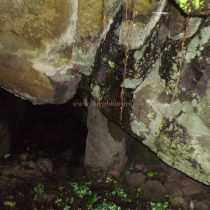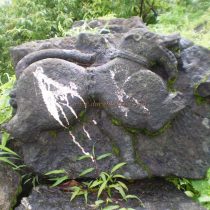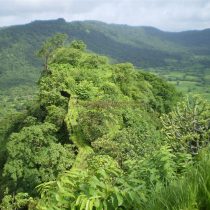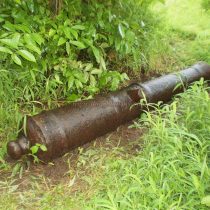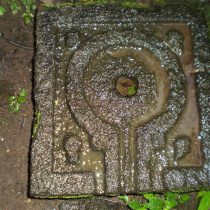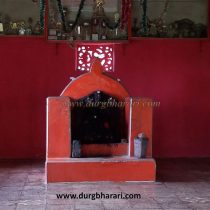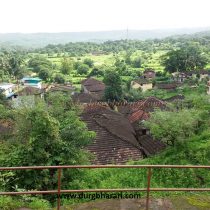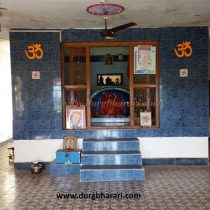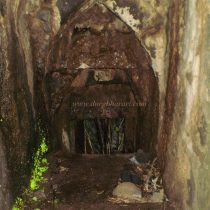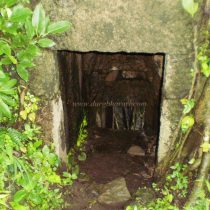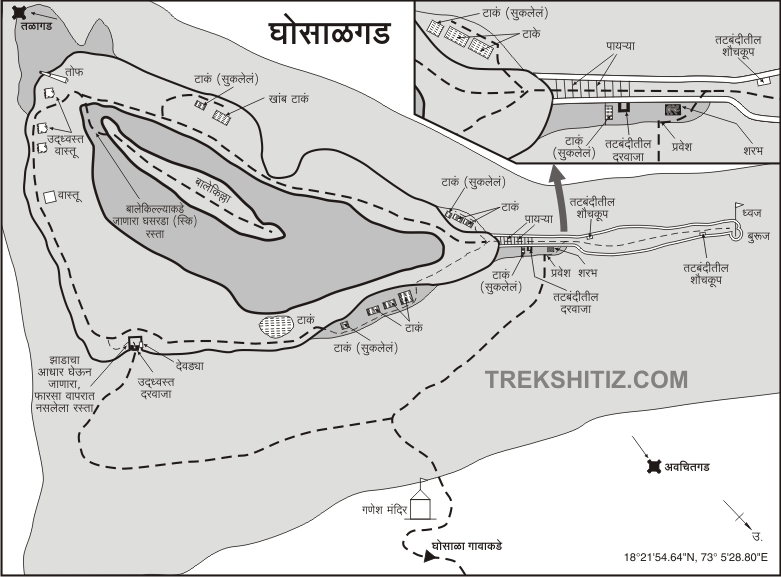GHOSALGAD
TYPE : HILL FORT
DISTRICT : RAIGAD
HEIGHT : 843 FEET
GRADE : MEDIUM
Avachitgad and Ghosalgad forts are located near Roha town on the west side of the Mumbai-Panaji highway. To reach Roha city, there are forks from Nagothane and Kolad on the highway. Roha is also an important railway station on the Konkan Railway. From Rohe S.T. station, there are buses to reach Ghosalgad. Ghosalgad aka Virgad fort is situated on a small hill, surrounded by small and large hills on all four sides between Revdanda and Salav creeks. Ghosalgad, which is 260 meters above sea level and about 200 meters above the base, looks like a Shivling from a distance. There is a village called Ghosale at the foothills and that’s from where the fort got its name Ghosalgad. Spread from north to south, this fort is to the west of Ghosale village.
...
There is a road leading to the fort from the village itself. At the end of the road, there is a staircase. There is a temple of Goddess Bhavani on the way to the steps and there is an ancient idol of Goddess Bhavani inside it. A little further from here is a big temple with a self-made idol of Lord Ganesha. In fifteen minutes from here, we reach the ramparts of the fort. Twelve steps carved in the rock can be seen in front. Some of these steps have been demolished but there are also some good steps. These steps lead you to the ruined gate of the fort. There are a large number of construction stones scattered in this area and two sharabh sculpture carved stones can be seen here. From here you enter the fort. Upon entering, a water cistern is visible under the ridge on the left. The purpose of building another small door to exit right next to the main door is not understood. Here the fort is divided into two parts. Machi likes the trunk of the fort on the right and the citadel hill on the left. The machi is built by building a rampart on a narrow mountain ridge and steps are built in some places to climb the ramparts. Toilets can be seen in some places in this rampart. A circular bastion is built at the end of Machi. From here you can see the citadel of Ghosalgad. After seeing the Machi, go back to the door and take up the path on the left to the citadel. After crossing a small hummock, we reach the ridge of the citadel. There is a place known as an ammunition depot at the top of the ridge, but the main path to this structure is from the back of the ridge. On the way to this road, you can see a water cistern dug in the ground. From this site, you can also take a detour to the hill of the citadel. There is also a water cistern at the bottom of the road on the right. However, we go up a little further and keep the ridges to the left. There are some caves carved in this road. Shivling is carved on a stone in front of these caves. Next to it, a pillared cistern is carved in the gorge. You have to descend a bit to see this cistern but it is dangerous to go down during the rainy season. Seeing these cisterns, we go back to go to the main path again. In a short time, we reach the back of the fort. There is a cannon here which is about 8 feet long. The path leading up to the front of these cannons leads to the citadel. This road is a bit slippery, so you have to climb it carefully. Apart from a large and a few small quadrangle structures, no other remains can be seen on the hilltop. A distant area can be seen from the top of the fort. From the top of the fort, the bottom of the fort is seen. The view of Kude Mandad creek keeps you hooked. The fort can also be reached from Ghosalgad Machi. Three hours is enough to cover the entire fort. Although it is not possible to say exactly when Ghosalgad was built due to lack of evidence, this fort, which has existed since before Shivaji Maharaj’s period, must have been built to monitor the trade through Tamhan Ghat. Goods unloaded at the Konkan port were taken to the top of the wharf from Tamhan Ghat. In the 16th century, the fort was in the possession of the Nizam Shah. In 1648, this fort under the control of Adilshahi joined the Swarajya. "Raghunath Ballal (Korde) Sabnis marched on Rajapuri with seven or five thousand soldiers of Khalak Pai. After the conquest of this fort by Chhatrapati Shivaji Maharaj, it was renamed 'Virgad'. Ghosalgad fort was one of the 12 forts that remained in the Swarajya after the treaty of Purandar with Mirza Raje Jaisingh. In 1659, seeing that Shivaji Maharaj was busy in the fight of Pratapgad, Siddi of Janjira had besieged Ghosalgad, but on hearing the news that Shivaji Maharaj had killed Afzal Khan, Siddi left the siege. Considering the location of Ghosalgad near Janjira, it seems that Siddi of Janjira must have tried to capture this fort many times. Eventually, after the death of Shivaji Maharaj, the fort moved to Siddi. Then in the year 1735, Bajirao won it and brought it back to the Marathas. In 1818, during the last Anglo-Maratha war before the attack on Raigad the fort was captured by Colonel Prother.
© Suresh Nimbalkar

